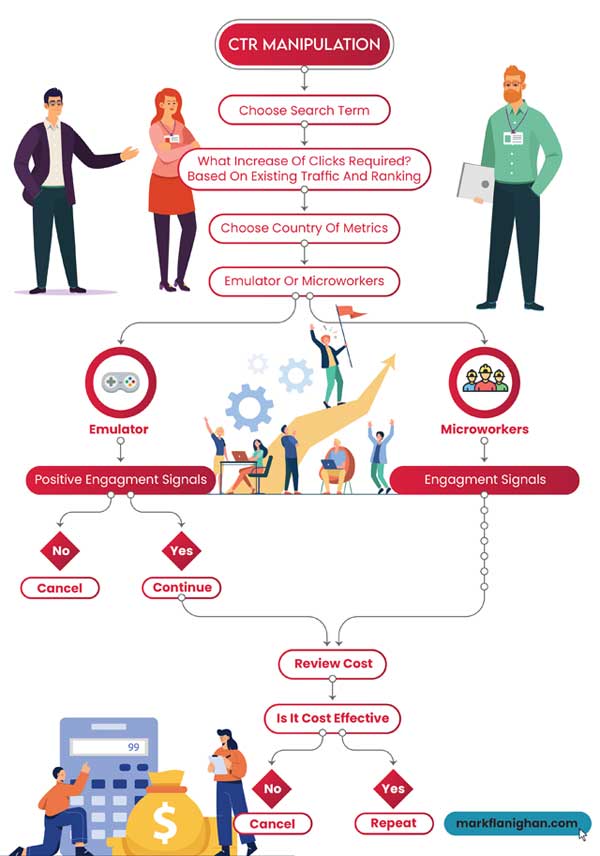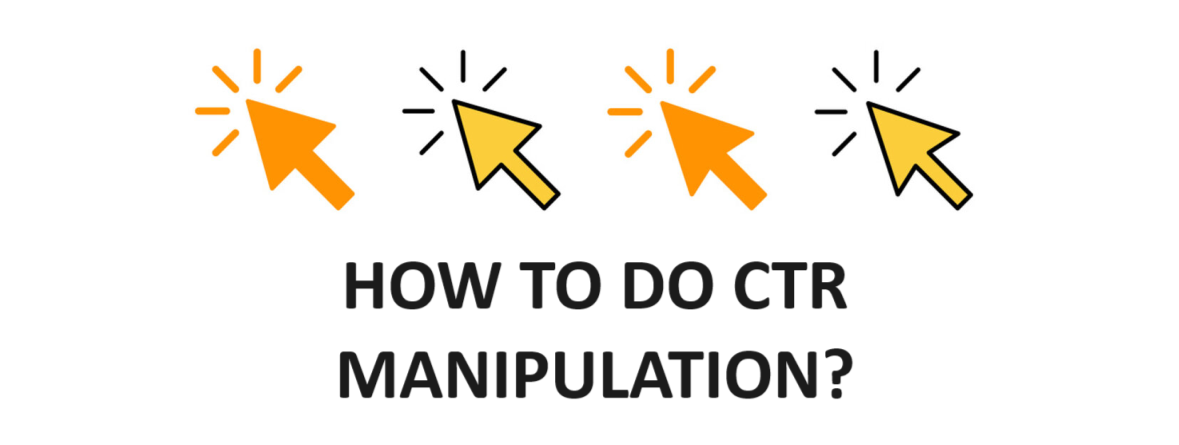Checking Out the Relationship Between CTR Adjustment Solutions and Customer Behavior
In the realm of digital advertising and marketing, the influence of click-through rate (CTR) adjustment services on customer habits continues to be a complicated and interesting subject. As online systems significantly depend on CTR metrics to gauge the success of web content, items, and solutions, understanding how these controlled prices influence individual engagement and decision-making procedures is critical. The interaction in between CTR adjustment and user habits questions about authenticity, credibility, and the moral ramifications of such methods. By dissecting the complex relationship in between CTR manipulation solutions and user habits, interesting understandings emerge that may improve our understanding of digital advertising and marketing techniques and their results on consumers.
Influence of CTR Manipulation on Behavior
Examining the impact of Click-Through Rate (CTR) adjustment on individual behavior exposes critical insights into the dynamics of online interaction. CTR adjustment includes unnaturally inflating the number of clicks on a specific web link or advertisement to trick users and online search engine. This method can cause a distorted assumption of a web page's appeal or relevance, inevitably affecting user behavior.

Moreover, CTR adjustment can alter the data utilized by algorithms to personalize user experiences. This can result in users being served content that does not align with their preferences or interests, inevitably bring about a decline in user fulfillment and interaction. Comprehending the impact of CTR manipulation on customer actions is necessary for preserving transparency and count on online communications.
Customer Involvement With Adjusted CTR
Individual interaction with controlled CTR data commonly causes skewed perceptions of on-line material popularity and relevance. When customers engage with content based on unnaturally inflated Click-Through Rates (CTR), they might think that certain details, products, or services are extra prominent or trustworthy than they in fact are. This can lead to individuals making decisions based upon misleading information, causing potentially negative results.
Engagement metrics like sort, shares, comments, and time invested on a website are often affected by CTR manipulation. Customers may be more likely to engage with web content that appears to have greater engagement prices, even more bolstering the cycle of skewed assumptions. Because of this, web content developers and marketers may focus on producing material that generates high CTR as opposed to concentrating on producing truly important and pertinent material.

Emotional Impacts of CTR Manipulation

In addition, the mental effects of CTR control can also show up in modified decision-making procedures. Individuals might be a lot more likely to click on web content exclusively based on its perceived appeal, instead of its actual worth or relevance to their demands. This behavioral change can lead to a superficial involvement with on the internet web content, where individuals may forget premium but much less preferred offerings for those with unnaturally increased CTRs.
Basically, the emotional implications of CTR control highlight the importance of maintaining openness and credibility in online communications to foster authentic user interaction and trust.
Honest Considerations in CTR Control
CTR adjustment elevates issues regarding tricking users, distorting data analytics, and compromising the trustworthiness of on-line web content. By synthetically inflating CTR, customers might be misdirected into clicking on web links or ads they would not have actually picked or else, leading to an insincere online experience.
An additional moral facet to consider is the fairness of controling CTR to acquire an unfair advantage over rivals. Involving in such techniques not just breaks principles of fair game yet likewise threatens the count on that users place in online systems. It is crucial for organizations and electronic marketing experts to support ethical criteria in their methods to guarantee openness, reliability, and long-lasting sustainability in the on-line atmosphere.
Ramifications for Digital Marketing
With the raising reliance on digital platforms for advertising functions, the practice of adjusting click-through rates (CTR) poses substantial implications for the effectiveness and stability of electronic advertising and marketing methods. CTR adjustment can result in skewed data analytics, misdirecting marketing experts into thinking that their campaigns are carrying out better than they in fact are. This can cause misallocation of sources, with firms investing in underperforming techniques based upon falsified CTRs. When users understand that CTRs have actually been manipulated, it can deteriorate count on in the brand, leading to long-term adverse effects for consumer commitment and brand track record.
Additionally, using CTR control solutions can develop an unjust affordable landscape, where companies that engage in such methods get a man-made benefit over those that adhere to honest marketing standards. This can stifle innovation and imagination in electronic marketing, as success comes to be more regarding manipulation techniques than delivering authentic value to customers. Eventually, the implications of CTR control for electronic marketing prolong past temporary gains, impacting the total sustainability and reputation of advertising and marketing initiatives in the digital world.
Conclusion
Finally, the partnership between CTR control solutions and user actions is complex and multifaceted. The effect of CTR manipulation ctr manipulation service on behavior, user engagement with controlled CTR, psychological results, honest considerations, and ramifications for electronic advertising and marketing all play a function in forming this relationship. Recognizing these dynamics is important for online marketers and scientists alike in order to browse the ethical effects and make best use of the performance of their digital marketing techniques.